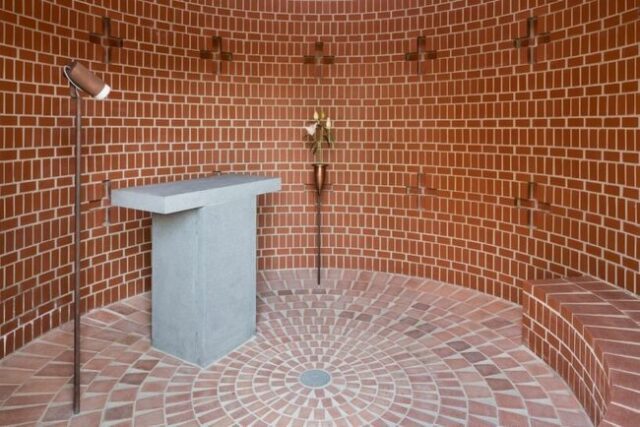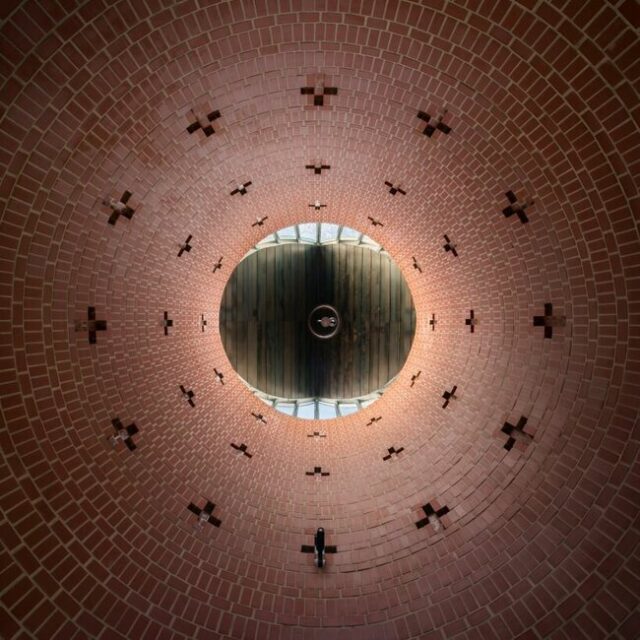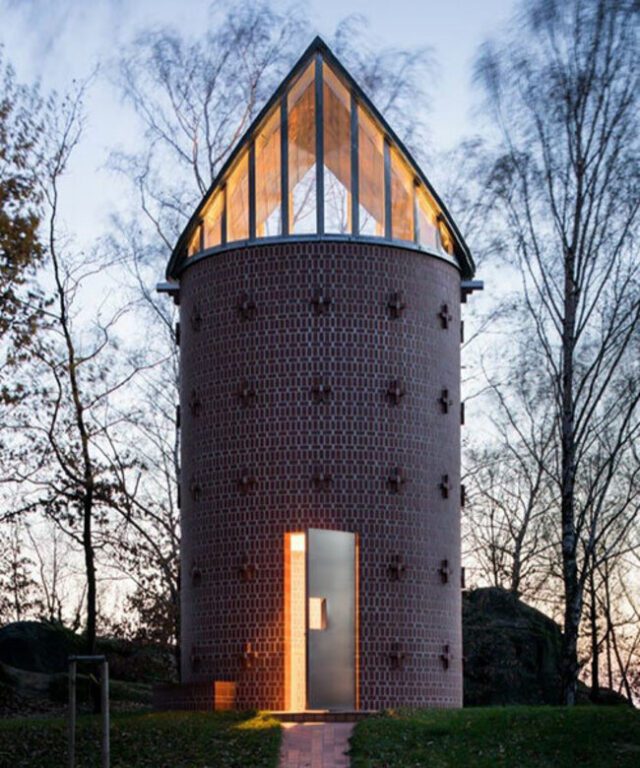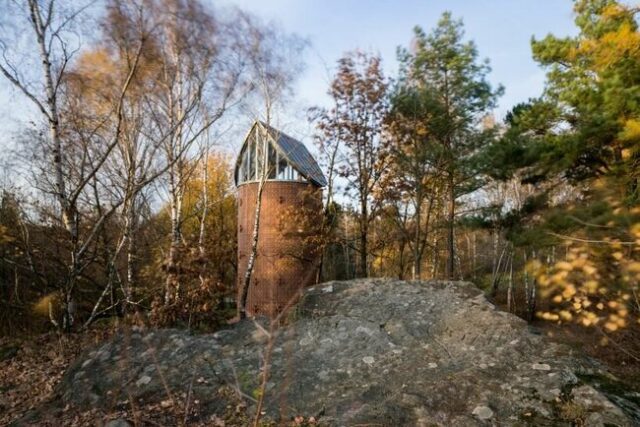
In Fryšták, Czechia, Zdeněk Rothbauer, and the Karel Filsak Architects have introduced a chapel dedicated to Saint Anthony of Padua that departs from conventional ecclesiastical design. This cylindrical structure, crafted from raw brick, draws inspiration from early Christian churches with circular floor plans, emphasizing simplicity and humility. Unique to this chapel is the atypical gable roof that replaces traditional dome frescoes, allowing light to filter through its geometric structures and creating a striking contrast between tradition and innovation. The chapel’s design incorporates circles, Greek crosses, and exposed brickwork, reflecting the Franciscan Order’s values of essential humility. This expressive use of circles symbolizes the cyclical nature of life and the universe. At the same time, the overall design serves as a sanctuary for quiet contemplation, embodying Franciscan principles such as poverty, renunciation of privileges, solitude, and learning. According to Karel Filsak, the chapel respects its material and historical context, achieving boldness through simplicity.
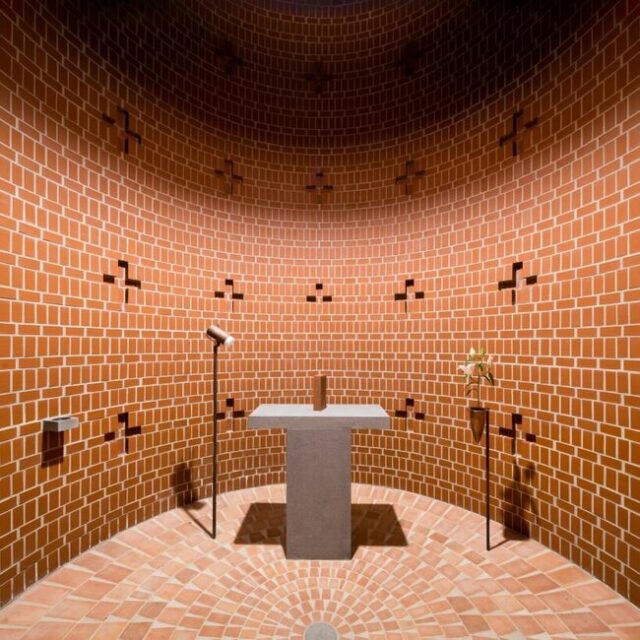
Inside the chapel, austerity is maintained with unplastered walls and minimal furnishings, underscoring the Franciscan values. Brick, chosen as the primary building material, is used throughout the structure, creating a cohesive and harmonious environment conducive to silent meditation. The Greek cross reliefs provide indirect lighting, enhancing the circular floor plan’s abstract composition. The interior furnishings, including an ambon, bench, hanging light, and a stand with a lily vase, symbolically underscore Saint Anthony’s authenticity and humility. The interior’s emptiness accentuates intimacy, drawing visitors’ gaze upward toward the roof. This roof, made of galvanized steel, lightly touches the brickwork in just two places and is supported by skylights divided into twelve columns, imparting a sense of balance and tranquility. The careful integration of material choice and geometric forms within the chapel reflects a seamless blend of historical reverence and modern architectural innovation.
